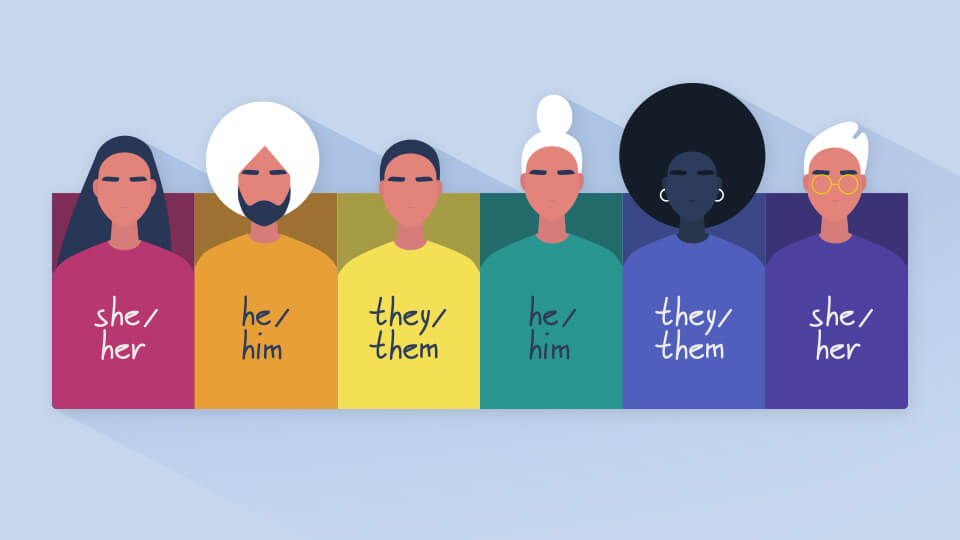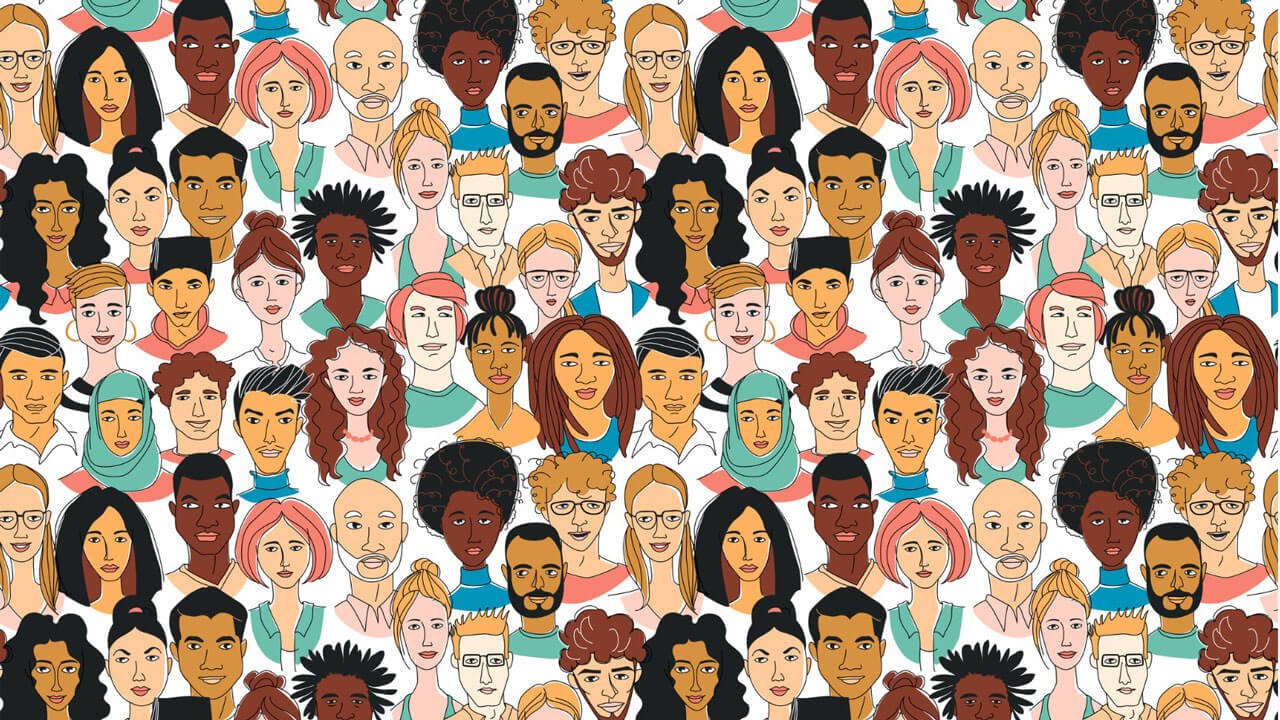The LGBTQ+ community is an active and attentive segment. Research shows more than 45% of LGBTQ+ individuals under 35 would align with a brand if they know a brand as an ally. The LGBTQ+ community also contributes $1.7 trillion to the U.S. economy annually.
However, it’s essential to note that the queer community isn’t solely a rainbow-hued monolith. In 2020 many brands resorted to the use of the rainbow Pride flag as a motif to signal a connection with queer consumers. But in 2021, this is not sufficient and a deeper, more meaningful approach has to be enacted. Research has shown LGBTQ+ consumers to be highly brand loyal—especially if it shows sustained engagement and support.
The usage of pronouns profoundly communicates allyship—in particular toward transgender and nonbinary persons. Advertising derives its powers from the stories and people it is targeting and the best practice is not to speak to queer communities but to speak with us.
Pronouns are a means for trans and nonbinary individuals to exert their right to be who they feel is the most accurate and authentic versions of themselves. But you don’t have to be gender-queer or gender-nonconforming to self identify, as they apply to everyone and should be viewed as a tool of expression rather than a hindrance.
Although the concept of gender-neutral pronouns is nothing new (the singular usage of “they” dates back 600 years) there has been recent debate and discussion on the subject that are multilayered and complicated.
Below are three considerations to keep in mind when advertising delves into this territory.
1.) Education and understanding of the terminology is paramount
Terminology isn’t interchangeable. The vocabulary exists in order to better describe and celebrate the richness of humanity. Below are some misconceptions and definitions to start :
- Gender identity, gender expression, bilogical sex, and sexual orientation apply to all of us. They are unique to each individual and no one is exempt in choosing how to navigate them.
- Gender is not the same as sexual orientation.
- Cisgender refers to those who identify on the side of the sex and gender identity assigned at birth.
- Transgender refers to those who do not identify with the sex and/or gender identity assigned at birth.
- Non-binary or gender queer are individuals who do not identify under the dichotomy of male/female.
2.) Respect individual pronoun choices and in turn show allyship
The declaration of gender pronouns on social media profiles (her/she, he/him, they/their, etc.) serves a dual purpose. One is that it grants the simultaneous opportunity to lift from the individual the burden of educating unaware parties and the innocuous labeling.
And secondly, if a cisgender entity places their preferred pronouns (even if they seem obvious), this shows a mutual level of respect and signals there is a safe space to communicate and have a dialogue.
This extends even beyond social media and has been employed in the following avenues and adverts:
- The contact page found in the homepage of The White House under the Biden administration now allows users to select their preferred pronoun usage and there is even a list of updated prefixes to include the gender-neutral “Mx.” along with “Mr.” “Mrs.” and “Ms.”
- In June 2019, Mastercard carried out an activation in New York City at Christopher and Gay Streets, called “Acceptance Matters.” It also took the opportunity to introduce its newest financial offering for the trans community: the True Name card.
- Trans and nonbinary individuals can have a credit card reflecting their true, gender-preferred name without having to show documentation of a legal name change.
- During a 2018 Super Bowl commercial, Coca Cola used the the pronoun “they” to represent a member of the cast who identified as non-binary.
Pronouns are personal matters and for an individual to discover what/who their authentic self is deserves to be recognized and honored. Showcasing your preferred pronouns and respecting those of others is a sign of nuanced understanding. Of course, not every Individual is obligated to disclose nor participate in the conversations, but what should not be tolerated is making a mockery of it, as this comes off as a form of alienation toward an already marginalized community, as was the case of The Mandalorian actor Gina Carano placing her elected use of pronouns as “boop/bop/beep.”
3.) Trans and non-binary lives matter
Trans and non-binary lives matter and these conversations (starting with pronoun usage) are urgent because data shows they aren’t valued in society.
According to The Trevor project, Approximately 40 percent transgender and nonbinary youth reported in 2020 of being physically threatened or harmed in their lifetime due to their gender idenity. However, transgender and nonbinary youth who reported having pronouns respected by all or most people in their lives attempted suicide at half the rate of those who did not have their pronouns respected.
In the United States, trans women of color have a life expectancy of 35 years of age, while that of cisgendered counterparts is 78. In 2019, the Human Rights Campaign reported that from 2011-2018, trans people of color composed 89% of victims of violent trans-phobic deaths.
We need to recognize differences—to allow others to freely be and express themselves. Thus in turn, allowing ourselves to realize and experience the lens and spectrum from which they experience the world, in order to make it one that is varied, vibrant, and welcoming.
To conclude: here are three ways to respect pronoun usage:
- Consult non-profit organizations such as The Human Rights Campaign, The Trevor Project, or GLAAD for resources—many of which have best practice guides available for marketers.
- Update your company’s email signature to show an individual’s preferred pronouns, as this begins to show that you are receptive and normalize the conversations around gender.
- Share information and always ask questions because, just like languages, we human beings are constantly evolving.







